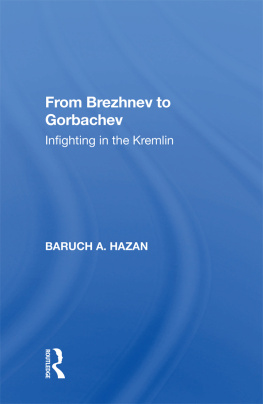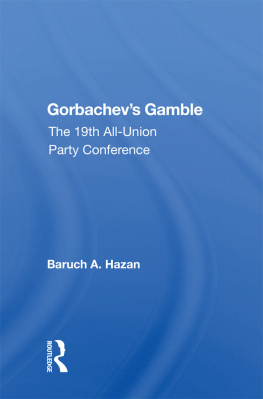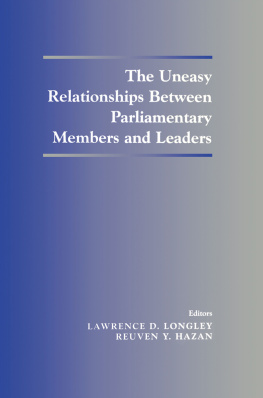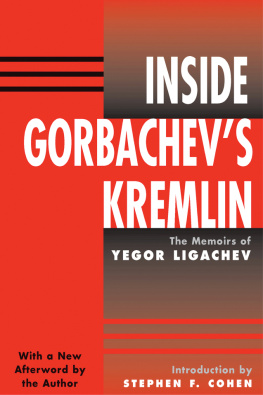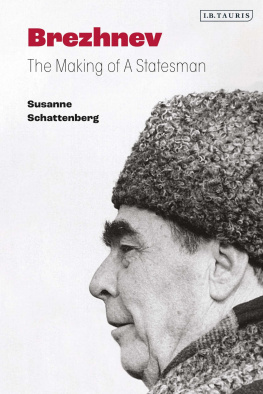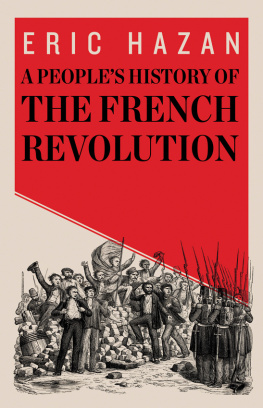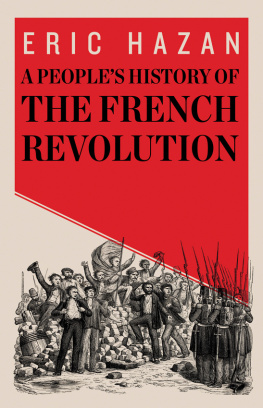From Brezhnev to Gorbachev
About the Book and Author
From 1982 to 1985, the period on which this book focuses, the Soviet Union was governed by a succession of ailing old menBrezhnev, Andropov, and Chernenkowho, supported by an equally elderly Politburo, were often physically incapable of controlling and directing the bureaucratic state machine and party organization. This unprecedented situation precipitated a secret and bitter power struggle within the top Soviet leadership between two main factions: the Chernenko apparatchiks, who had risen to power under Brezhnev and owed their positions to him; and the supporters of Andropov, including the younger, more dynamic, and power-hungry members of the party elite, who had been advocating fairly bold reforms to deal with the grave social and economic problems facing the USSR.
Dr. Hazan provides a detailed analysis of this hidden power struggle as he examines the final years of Brezhnev's reign and the brief ascendancies of Andropov and Chernenko. These rapid changes led to the demise of the old guard in the Politburo and the emergence of a new breed of leader in Mikhail Gorbachev, culminating in the final consolidation of his power at the 27th CPSU Congress. Drawing on an extensive range of primary sources and using vivid examples of how the factions exploited the gigantic propaganda machine of the Soviet mass media, the author looks behind the Kremlin's walls to explore the essence of Soviet politics. The book describes the power base of each of the recent Soviet leaders and analyzes the steps they took to consolidate their positions and tighten controls over the bureaucracy and the military.
Baruch A. Hazan teaches at the Institute of European Studies, Vienna, Austria, He is the author of The East European Political System. (Westview, 1985), Olympic Sports and Propaganda Games (1982), and Soviet Impregnational Propaganda (1982).
From Brezhnev to Gorbachev
Infighting in the Kremlin
Baruch A. Hazan
To my parents, Amely and Albert Hazan, and to Sara and David Goldstein
First published 1987 by Westview Press, Inc.
Published 2018 by Routledge
52 Vanderbilt Avenue, New York, NY 10017
2 Park Square, Milton Park, Abingdon, Oxon OX14 4RN
Routledge is an imprint of the Taylor & Francis Group, an informa business
Copyright 1987 Taylor & Francis
All rights reserved. No part of this book may be reprinted or reproduced or utilised in any form or by any electronic, mechanical, or other means, now known or hereafter invented, including photocopying and recording, or in any information storage or retrieval system, without permission in writing from the publishers.
Notice:
Product or corporate names may be trademarks or registered trademarks, and are used only for identification and explanation without intent to infringe.
Library of Congress Cataloging-in-Publication Data
Hazan, Barukh, 1942
From Brezhnev to Gorbachev.
Includes index.
1. Soviet UnionPolitics and government1982
2. Elite (Social sciences)Soviet Union. 3. TSK KPSS.
Politbiuro. I. Title.
DK288.H39 1987 320.947 86-13267
ISBN 13: 978-0-367-00653-2 (hbk)
This book should not be considered a definitive assessment of the power struggle in the Kremlin but merely a description and analysis of a number of crucial stages in this process. Since I have had no access to inside information on the discussions within the Politburo and the Central Committee or on the developments in the Kremlin, my study has been almost entirely based on the official Soviet discourse speeches, articles, party and governmental announcements, reports on the movement of the Soviet leaders, and so on. Consequently, the Soviet mass medianational and regional newspapers and journals, radio, television, and TASSare the main sources used in the study. I have deliberately avoided the use of other works dealing with related issues or with the period covered by this study, not because I regard these works as inferior in any way but simply because my intention was to base the study on the available Soviet primary sources.
The correct assumption by many authors that all officially published material in the Soviet Union is subject to rigorous censorship has often led to the conclusion that such sources cannot serve as a reliable basis from which to analyze political developments in the Soviet Union, unless of course the authors engage in the notorious practice of "reading between the lines." This conclusion, however, is not necessarily correct. Throughout the period discussed in this study republican leaders have effectively used the republican press to indicate their attitudes toward a new leader or their position on a particular issue. Careful comparative analysis of the releases by the Soviet regional press often provides revealing insights into the political scene. The same applies to various articles ostensibly dealing with historical subjects or theoretical issues or discussing events in Lenin's life or past periods of Soviet history. These are often charged with strong allegorical meaning in relation to current developments in the Kremlin, indicating dissenting opinions or a new approach. Although such sources cannot compare to those available to students of Western political systems (official protocols, interviews, open statements of the leaders, memoirs), they certainly serve as alternative and often surprisingly reliable sources of information on the issues engaging the attention of the Soviet leaders at a particular period and on the leaders' positions in the power struggle.
Naturally, a study that relies almost exclusively on official sources suffers from unavoidable limitations. It is difficult and sometimes even impossible to establish a connection between a certain journalist and a particular leader or a group of leaders (luckily, this is not the case with the republican press); in most cases it is impossible to find sufficient corroboration of conclusions reached from an analysis of the open sources. Finally, authors constantly run the risk of making too much of the available material and using it as a basis for broad generalizations. Even though I have tried to avoid this temptation, I am painfully aware of the limitations of this type of analysis and the problems that it poses. Nevertheless, I hope that this book provides an accurate, though limited, analysis of one of the most turbulent and unusual periods of Soviet political life.
Baruch A. Hazan
In the autumn of 1963, having obtained a short furlough from the Israeli Army, I went to register at the Hebrew University of Jerusalem, without having any clear idea of what I really wanted to study. Since I had been born in Bulgaria and lived there until the age of fourteen, I was proficient in the Bulgarian and Russian languages, and accordingly formed the vague intention of studying in a field connected with the USSR or Eastern Europe. However, I had no concrete plans. Having one or two hours free before registration, I made my way to the library of the Department of Political Studies. The first book that I pulled out at random from the shelf dealt with Soviet foreign policy and was published by one Frederick Praeger. So was the second and most of the books that I subsequently perused. I therefore formed a clear impression that the field of Soviet studies was inseparably connected with the name of Frederick Praeger. When I left the library, I still had no clear idea about my field of study but was nevertheless sure of one thingsooner or later, I wanted to write a book that would be accepted for publication by Frederick Praeger.


